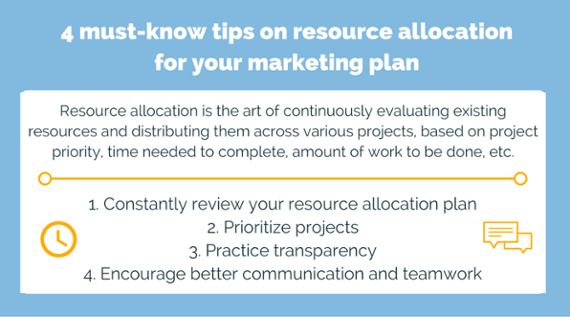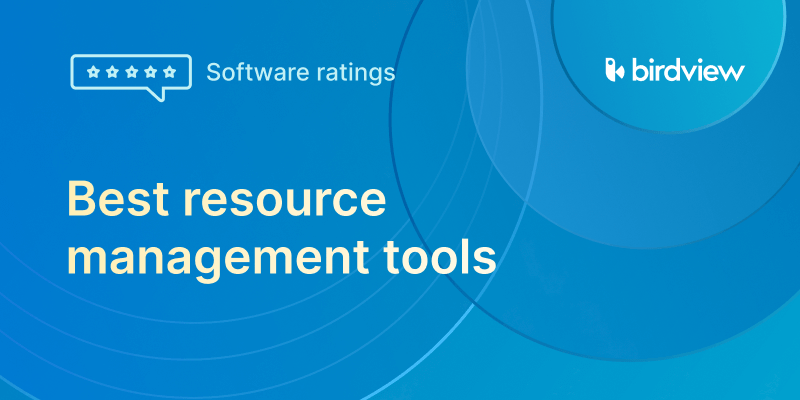Does your team often feel overworked, juggling multiple projects while some tasks fall through the cracks? Poor resource allocation is a common culprit, leading to burnout, inefficiency, and missed opportunities. Even with detailed plans, unexpected challenges or new priorities can quickly throw things off balance. In this article, we‘ll share four essential tips for mastering resource allocation in your marketing plan. From prioritizing projects to fostering better communication, these strategies will help you optimize resources and keep your team on track–even when the unexpected happens.
“God, I have so much work to do!”
“I can’t help with the new project. I barely have enough time to do all the work for the other projects.”
Tell me if those statements aren’t common in your team. Oftentimes, especially when managing a number of different projects, the marketing team’s resource allocation gets way too out of hand. The worst part is that on paper, everything is scheduled and planned neatly, which leads marketing project managers to think that they have enough time and recourses to undertake a few more projects.
But in reality, it turns out that every single team member is somehow allocated more than 100% of their time, with the exception of this one guy who has almost no work to do. Wrong resource allocation leads to complexities in the workplace, as well as tons of missed opportunities that could otherwise be turned into tangible profit.
The thing is that on paper, everything is usually planned based on the idea that no accidents, emergencies, or problems will happen during the execution phase. And even if you plan all that (which is almost impossible to do, but hey, we still try), you can’t plan for every single thing that may or may not happen in the future.
This is when problems begin to emerge. So how do we fix the wrong resource allocation?
Resource allocation 1.0.1
Resource allocation (or resource management) is the process of evaluating existing resources (human, hardware, time, budget, etc.) and distributing them among a number of projects to balance the priorities of the company.
This is the ideal definition of resource allocation. But when you look at it closely, it misses a few important points:
- What happens when any sort of emergency (company or personal level) takes place?
- What if you onboard a new project? Typically, it’s a good idea to allocate resources between existing projects by 100% to maximize job quality and minimize the amount of time needed to complete each project. But when a new project comes into play with existing resources already allocated at 100%, how do you make the shifts?
- What if the new project you onboard has a higher priority than the existing one? Take the simplest example: the newer client pays x2 more than existing clients for almost the same amount of jobs (yay sales team!). What do you do then? Obviously, you can’t abandon existing projects, but it will be stupid to say “no” to the new one.
So the definition should be something like:
Resource allocation is the art of continuously evaluating existing resources and distributing them across various projects, based on project priority, the time needed to complete, amount of work to be done, etc. taking into consideration the buffer time for any emergency situations (company or personal).

Constantly review your resource allocation plan
It’s essential to review the resource allocation plan from time to time, in order to minimize over/under allocation issues. When a large team is working on a number of projects, the small issues and details that arise (and they ALWAYS do) often take additional time to complete, but in most cases, they are so insignificant that a good team player will not voice them: they will simply proceed with fixing the problem.
As more and more time goes by though, the number of those mini-problems grows, and even though they get solved along the way, team members unconsciously work longer on a project than they are supposed to, which automatically leaves less time for other projects. And that’s how a mess is created practically out of nothing.
Knowing this, review the resource allocation plan with your team at least once a month to make sure everything is under control.
Prioritize projects
When dealing with a project with high priority, it might be a good idea to allocate more resources to that project than normal, to help finish it sooner. However, this can be tricky.

When allocating too many resources for a certain project, you need to make sure that you aren’t hurting (or at least not too much) others. For example, if the project is short-term, this will be a good idea.
One important thing to consider is the effectiveness of your tools in handling project demands. A reliable SEO tools can assess project needs and identify areas for improvement. These tools help your team handle complex projects with better focus and less manual oversight. This boosts productivity and allows your team members to dedicate more attention to strategic planning and other high-impact areas. In fact, AI-powered SEO tools and marketing platforms have redefined efficiency, making it easier for teams to manage multiple projects without overextending resources.
Utilizing the right tools can help ensure that resources are distributed efficiently and that no other critical projects are neglected. For instance, Linkee is an SEO link building tool that can optimize your marketing efforts, allowing your team to focus on priority tasks while still driving long-term growth.
Another thing to keep in mind is the individual skills and differences of your team. There are people who typically work faster than others, so when dealing with high-priority projects, have the faster guys deal with it.
Read more:
Practice transparency
When dealing with wrong resource allocation, it’s almost impossible to set things right if you don’t know the full story. Each team member should always communicate any problems/issues that they faced or solved during the process, which came up out of nowhere and required additional time to complete.
The more information you gather, the more effectively you will be able to distribute tasks between team members, taking into consideration time, individual skill, the number of people needed, etc.
Encourage better communication and teamwork
Finally, regardless of how good you are at management, it’s always going to be harder to do it all alone. Team members often know better how much time they need to complete a task, or how much extra time they might have during the working day.
Encouraging better communication between team members will help sort things out faster. For example, if a team member suddenly faces a problem that he can’t complete due to lack of time, skill, or something else, another team member with better skills or more time to spare can rush to help. This way, you will not only give your team a lot more freedom in their daily activities but also make sure that emergencies/unexpected issues will be dealt with more efficiently.
Proper recourse allocation is one of the hardest parts of your marketing strategy. At the end of the day, you might not be able to utilize all resources at 100%, no matter how hard you try. The best advice will be: In case when one approach doesn’t work, try another route.
Oh yeah, and don’t try to do it alone. Marketing isn’t called a team sport for anything -)




